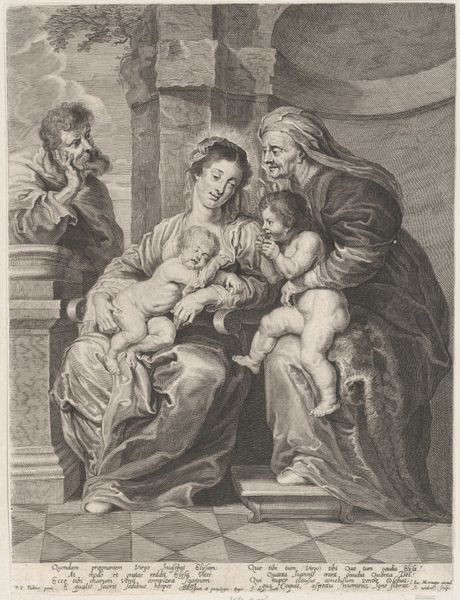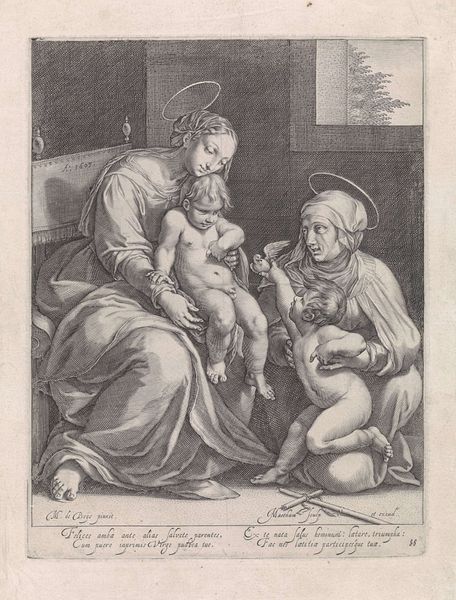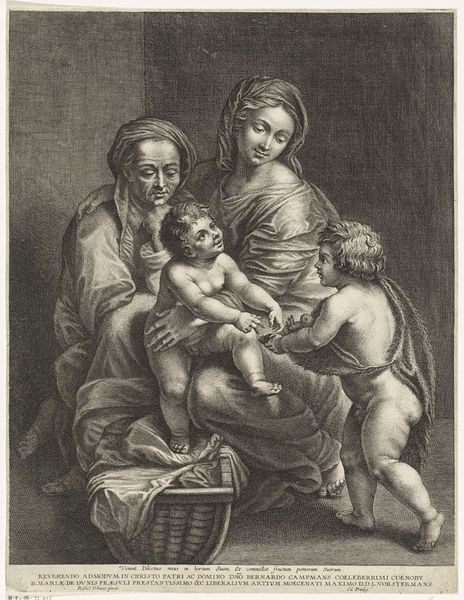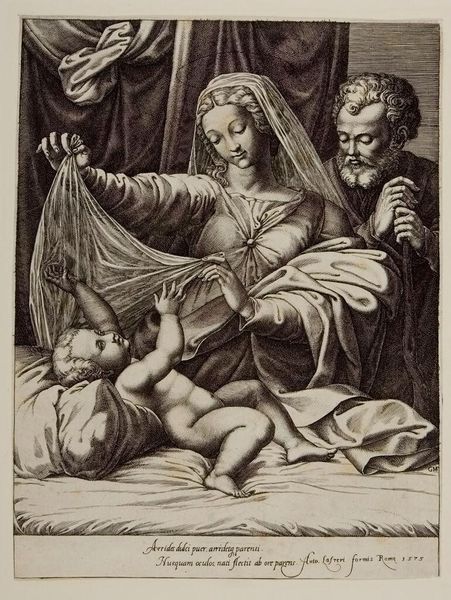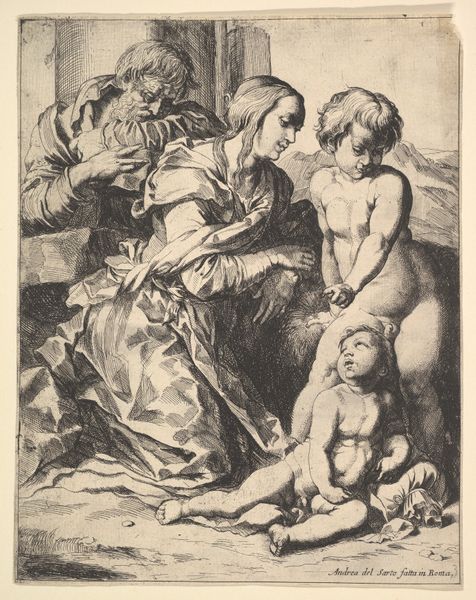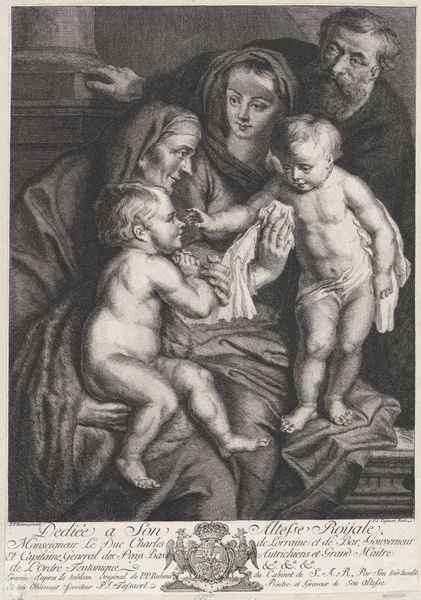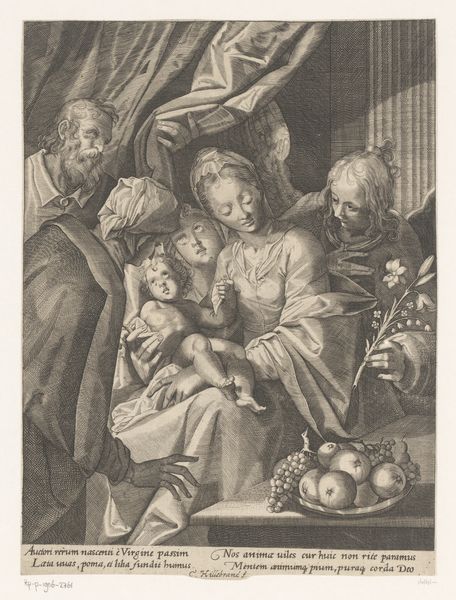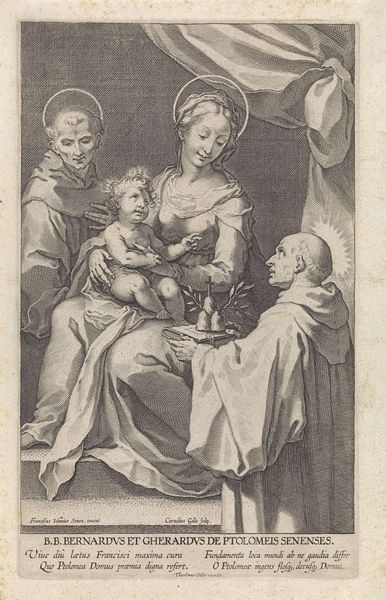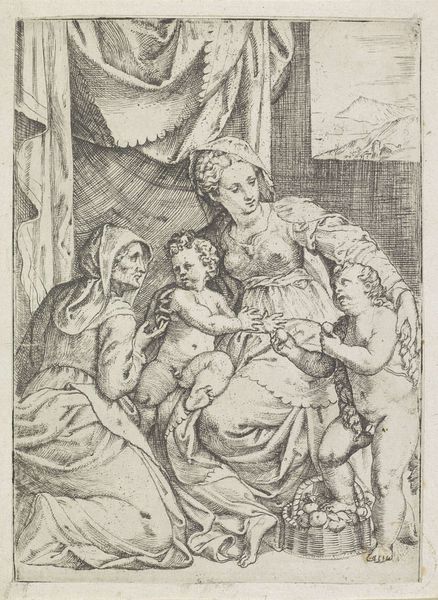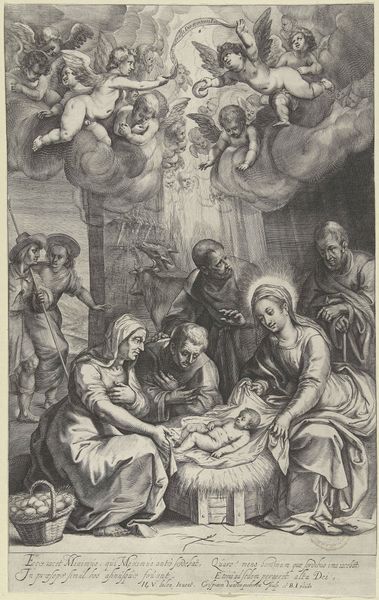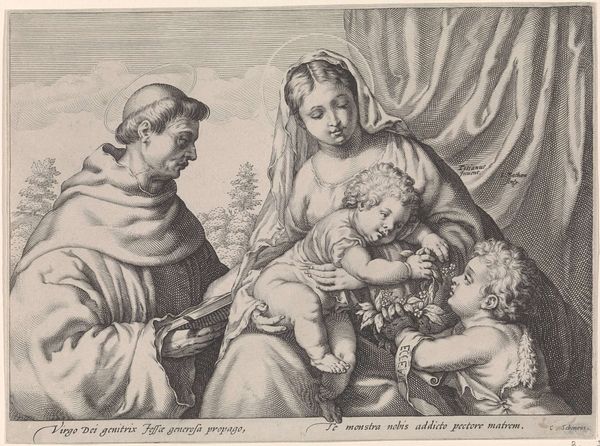
print, engraving
#
portrait
#
baroque
# print
#
old engraving style
#
figuration
#
history-painting
#
engraving
Dimensions: height 378 mm, width 259 mm
Copyright: Rijks Museum: Open Domain
Editor: So, here we have “The Holy Family with Elizabeth and John the Baptist,” a print from the 17th century, held in the Rijksmuseum. It’s an engraving… all these figures rendered in these fine lines. There’s an intimacy to it, but it also feels very…formal. What stands out to you? Curator: The intense labor that goes into an engraving like this. Think about the tools, the gouges into the metal plate, the sheer time investment to produce these fine lines. This wasn't just about aesthetic beauty; it was a commercial product. Editor: A commercial product? How so? Curator: Prints like this made religious imagery accessible to a broader audience. Before mass media, this was a crucial method of disseminating religious ideals, turning faith into a consumable object. It puts religious figures in people’s homes, literally. Editor: So the medium itself changed how people related to these figures? Curator: Precisely. It democratized the image. Instead of being confined to cathedrals, the Holy Family could be owned, displayed, and interacted with on a personal level. This alters the very perception and significance of the image. How might that influence devotional practices or family structures, for example? Editor: I hadn’t considered the economics of religious art like that before. Curator: Seeing the material reality of its production allows us to appreciate the artwork in its time, outside purely aesthetic concerns. This isn’t just devotion; it's commerce, craft, and cultural dissemination all wrapped into one printed image. Editor: That's definitely given me a different perspective on the piece. I'll be looking at prints very differently now!
Comments
No comments
Be the first to comment and join the conversation on the ultimate creative platform.
